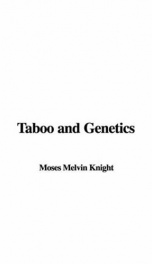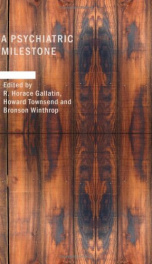Purchase of this book includes free trial access to www.million-books.com where you can read more than a million books for free. This is an OCR edition with typos. Excerpt from book: CHAPTER II SEX IN TERMS OF INTERNAL SECRETIONS Continuity of germplasm; The sex chromosome; The internal secretions and the sex complex; The male and the female type of body; How removal of sex glands affects body type ; Sex determination ; Share of egg and sperm in heredity ; Nature of sexsexual selection of little importance; The four main types of secretory systems; Sex and sex-instincts of rats modified by surgery ; Dual basis for sex ; Opposite- sex basis in every individual; The Free-Martin cattle ; Partial reversal of sex in man. In Chapter I, the " immortality" of the protoplasm in the germ cells of higher animals, as well as in simpler forms without distinct bodies ,was mentioned. In these higher animals this protoplasm is known as germplasm, that in body cells as somatoplasm. All that is really meant by " immortality " in a germplasm is continuity. That is, while an individual may consist of a colony of millions of cells, all of these spring from one cell and it a germ cellthe fertilized ovum. This first divides to form a new group of germ cells, which are within the embryo or new body when it begins to develop, and so on through indefinitegenerations. Thus the germ cells in an individual living to-day are the lineal descendants, by simple division, of the germ cells in his ancestors as many generations, or thousands of generations, ago as we care to imagine. All the complicated body specializations and sex phenomena may be regarded as super-imposed upon or grouped around this succession of germ cells, continuous by simple division. The type of body in each generation depends upon this germplasm, but the germplasm is not supposed to be in any way modified by the body (except, of course, that severe enough accidents might damage it). Thus we resemble our ... --This text refers to an alternate Paperback edition.


![Taboo and genetics; a study of the biological, sociological and psychological foundation of the family, by M.M. Knight, Iva Lowther Peters [and] Phyllis Blanchard_cover](https://files.onread.com/653900/thumbs/152x264/taboo-and-genetics-a-study-of-the-biological-sociological-and-psychological-foundation-of-the-family-by-mm-knight-iva-lowther-peters-and-phyll.jpg)













